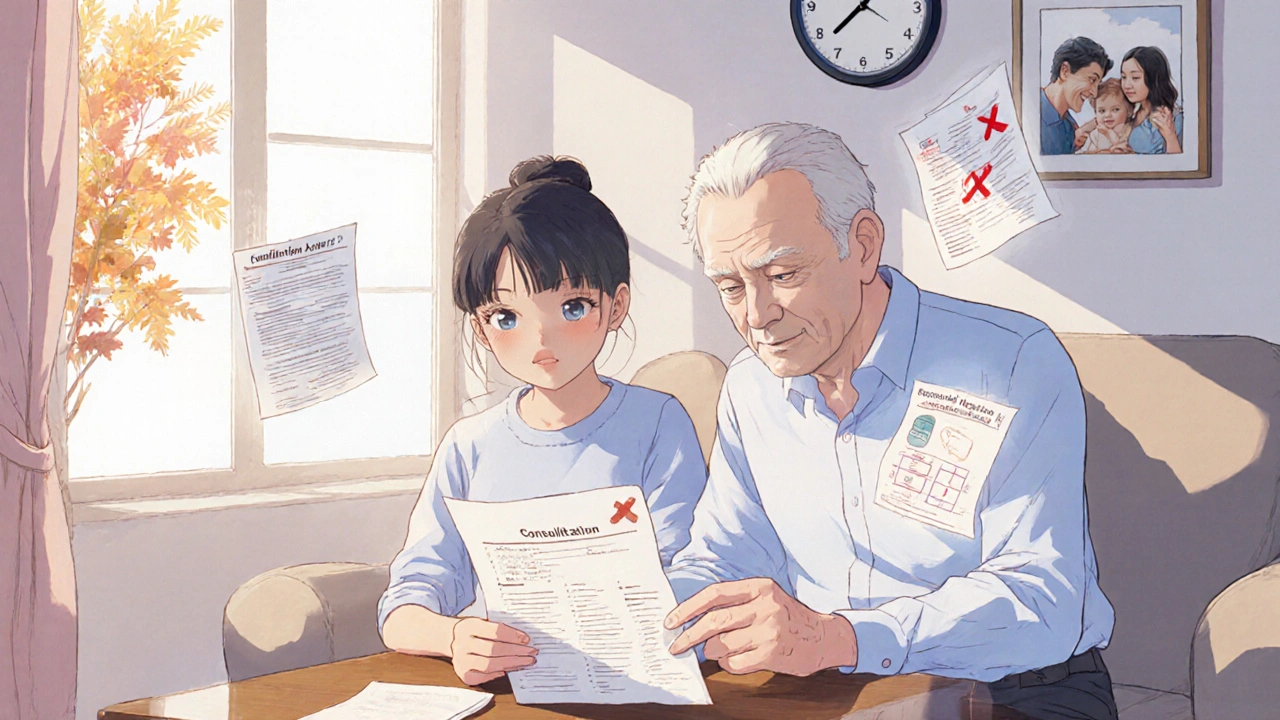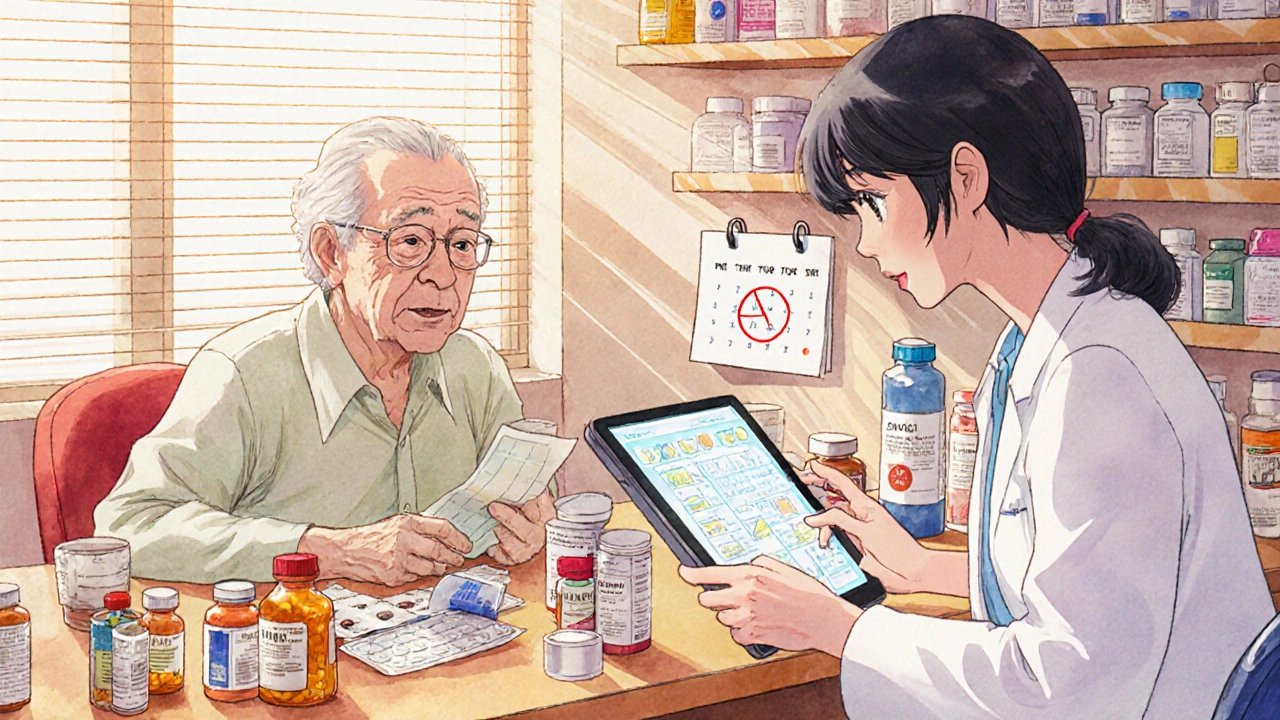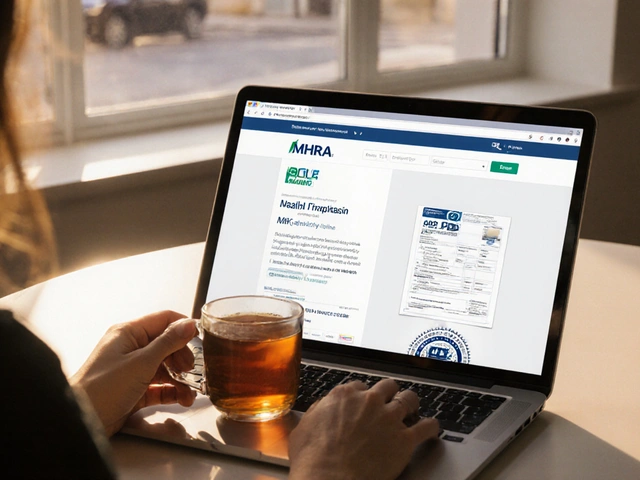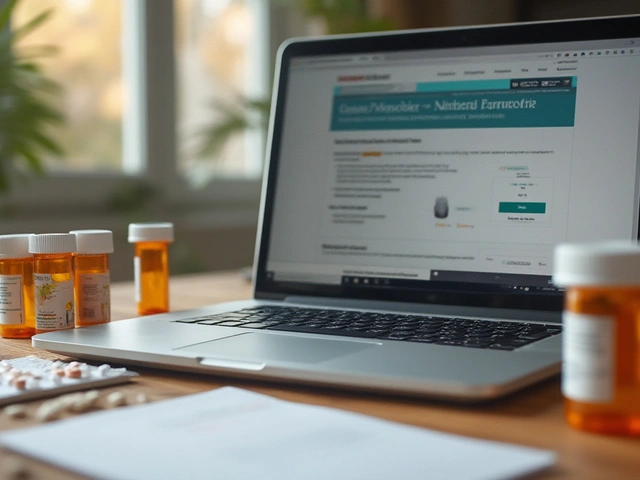Every year, Medicare Part D beneficiaries who meet certain criteria are offered a free, in-depth medication review called a Comprehensive Medication Review (CMR). It’s not just a quick chat with your pharmacist-it’s a full assessment of every pill, supplement, and OTC drug you take. And if you prepare properly, it can stop dangerous interactions, save you money, and even prevent hospital visits.
But here’s the catch: if you show up without your meds in hand or don’t know what questions to ask, the review becomes a waste of time. Many seniors miss out on life-saving insights simply because they didn’t get organized ahead of time.
What Exactly Is a Medicare Annual Medication Review?
The Medicare Annual Medication Review, officially called a Comprehensive Medication Review (CMR), is a required service under the Medicare Modernization Act of 2003. Every Medicare Part D plan must offer it to eligible beneficiaries at least once a year. It’s not optional-it’s built into your coverage.
A licensed pharmacist sits down with you (in person or over video) and reviews everything you take: prescription drugs, over-the-counter painkillers, herbal supplements, vitamins, even eye drops and patches. They check for:
- Drug interactions (like blood thinners mixing with fish oil)
- Duplicate medications (two pills doing the same job)
- Unnecessary drugs (meds you no longer need)
- Cost-saving alternatives
- Adherence issues (why you’re skipping doses)
The result? A personalized Medication Action Plan and a written summary you can keep. Studies show that when patients prepare well, CMRs catch 3 out of 4 hidden medication problems that doctors miss during regular visits.
Who Qualifies for a Medicare Annual Medication Review?
Not everyone gets invited. Eligibility changed in 2025 to make it easier to qualify. You’re eligible if you:
- Have at least three chronic conditions (like diabetes, heart disease, COPD, or high blood pressure)
- Take at least two Part D-covered medications (including maintenance drugs like insulin or statins)
- Spent at least $1,623 out-of-pocket on covered Part D drugs in the past year
That last number is key. In 2023, the threshold was $4,044. Now it’s under $1,700-so many more seniors qualify. If you’re on multiple medications and pay for them yourself, you’re likely eligible. Your plan will notify you by mail or phone if you qualify. But don’t wait for them-call your Part D insurer if you’re unsure.
Why Most People Waste Their CMR (And How to Avoid It)
Over 50% of beneficiaries show up to their CMR unprepared. They think, “I’ll just remember what I take.” They don’t bring pill bottles. They forget their fish oil or glucosamine. They don’t write down their symptoms.
Here’s what happens then:
- The pharmacist can’t verify doses or frequencies.
- They miss hidden supplements that interact with prescriptions.
- You leave without answers to your biggest concerns.
- You have to reschedule-wasting more time.
One Reddit user, SeniorHealth101, said: “I brought my fish oil capsules-and my pharmacist found a dangerous interaction with my blood thinner I didn’t even know about.” That’s the power of preparation.
Step-by-Step: How to Prepare for Your CMR
Set aside 45 to 90 minutes before your appointment. This isn’t busywork-it’s insurance for your health.
- Gather every medication you take-in their original containers. This includes:
- All prescription bottles (even if you don’t take them daily)
- Over-the-counter pills (ibuprofen, antacids, sleep aids)
- Vitamins and supplements (vitamin D, magnesium, CoQ10)
- Herbal remedies (turmeric, ginkgo, St. John’s wort)
- Topical treatments (patches, creams, eye drops)
- Any medications from other doctors or hospitals
Don’t rely on memory. Don’t use a pill organizer. Bring the bottles. Pharmacists need to see the label for exact dosing and instructions.
- Write down your top 3 concerns
What’s bothering you? Maybe you’re dizzy after taking your blood pressure pill. Maybe you forget to take your diabetes meds. Maybe your cholesterol meds cost $200 a month and you’re skipping doses to make them last.
Write these down. Bring the list. Don’t trust your memory.
- Track your medication timeline
For each medication, note:
- When you started taking it
- Why your doctor prescribed it
- Any changes (dose increased, switched brands, stopped and restarted)
Example: “Lisinopril-started Jan 2023 for high blood pressure. Dose went from 10mg to 20mg in June 2023 after my last checkup.”
This helps the pharmacist spot patterns. Did your dizziness start after the dose change? That’s critical info.
- Bring recent health records
Did you go to the ER last month? Get new lab results? Have a hospital stay? Bring those reports. A spike in creatinine could mean a kidney drug needs adjusting. A drop in hemoglobin might mean your iron pill isn’t working.
Even if you don’t understand the numbers, bring them. The pharmacist will interpret them.
- Bring someone with you
Medication reviews can be overwhelming. You’ll hear new terms, new instructions, new warnings. Having a family member or friend there helps you remember what was said. They can also ask questions you didn’t think of.
What Happens During the Review?
The pharmacist will:
- Verify every medication you brought against your claims history
- Ask about side effects you’ve experienced
- Check for interactions between all your meds (including supplements)
- Look for drugs you can stop safely
- Suggest lower-cost alternatives if available
- Explain how to take each drug correctly
They’ll also give you three documents:
- Consultation Letter-a summary of what was discussed
- Medication Action Plan-your personalized next steps (e.g., “Stop taking ibuprofen,” “Switch to generic metformin”)
- Personal Medication List-an updated, easy-to-read list of everything you should be taking
Keep these documents. Give a copy to your primary care doctor. Use them when you see a new specialist.
Real Benefits: What People Actually Gain
People who prepare properly walk away with real wins:
- One woman saved $1,800 a year after switching from a brand-name statin to a generic
- A man stopped taking a sleep aid that was making his dementia worse
- A widow discovered her blood thinner was interacting with her daily turmeric supplement-she stopped it and avoided a bleeding risk
- Another senior learned they were taking two different pills for the same condition-dropping one cut their monthly cost in half
According to Medicare Rights Center data, 78% of beneficiaries rated their CMR as “very helpful” when they came prepared. Only 42% did when they didn’t.
What to Do After the Review
Your work isn’t done when the pharmacist says “done.”
- Update your Personal Medication List and keep it in your wallet or phone
- Share the Action Plan with your doctor
- Set reminders for any new instructions (e.g., “Take metformin with food”)
- Call your pharmacy if you have questions later
- Save the documents for next year’s review
If you’re told to stop a medication, don’t do it on your own. Talk to your doctor first. But now you have the facts to have that conversation.

Common Mistakes to Avoid
- Bringing only prescriptions-OTC drugs and supplements cause 30% of dangerous interactions
- Not bringing pill bottles-pharmacists need to see the label, not your memory
- Not writing down questions-you’ll forget them in the moment
- Thinking it’s just a formality-this is your chance to fix problems no one else noticed
- Waiting for the invitation-if you think you qualify, call your plan. Don’t wait
What If You Don’t Qualify Yet?
You still have options. Even if you don’t meet the 3-chronic-condition threshold, you can ask your pharmacist for a free Medication Therapy Management (MTM) session. Many pharmacies offer these as a courtesy.
Or, ask your doctor to order a “medication reconciliation” during your next visit. It’s not the same as a CMR, but it still helps catch errors.
And if you’re close to the $1,623 out-of-pocket cost, track your spending. You might hit the threshold before the year ends-and then you’ll qualify automatically.
Final Thought: This Is Your Health, Not Just a Form
The Medicare Annual Medication Review isn’t bureaucracy. It’s your safety net. It’s the one time in the year when someone looks at your entire medication picture-not just one piece of it. And if you show up ready, you’ll walk out with fewer pills, lower costs, and less risk.
Don’t let it slip by. Gather your bottles. Write your questions. Bring a friend. Take 90 minutes now to protect your health for the next 365 days.







